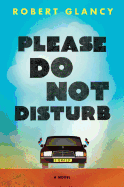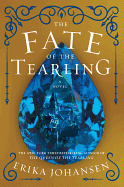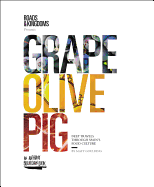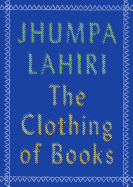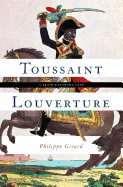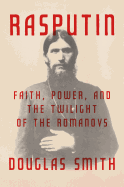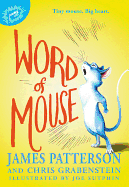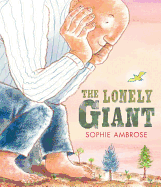Tuesday, December 20, 2016
The holidays are almost here, and we have a few more last-minute gift suggestions. Wendell Berry's 1995 Roots to the Earth, poems with wood engravings by Wesley Bates, has been reissued, with a short story included, by Counterpoint Press ($26). It's a handsome book, a fitting tribute to Berry, a national treasure. New Directions and the Christine Burgin Gallery have co-published Emily Dickinson's Envelope Poems, which were written on used envelopes ($12.95). Full-color facsimiles are paired with transcriptions of the poet's handwriting to craft a charming volume. W.S. Merwin composed the poetry of Garden Time (Copper Canyon Press, $24) as he lost his eyesight--poignant, lyrical elegies musing on time, mortality, memory.
Wendell Berry's 1995 Roots to the Earth, poems with wood engravings by Wesley Bates, has been reissued, with a short story included, by Counterpoint Press ($26). It's a handsome book, a fitting tribute to Berry, a national treasure. New Directions and the Christine Burgin Gallery have co-published Emily Dickinson's Envelope Poems, which were written on used envelopes ($12.95). Full-color facsimiles are paired with transcriptions of the poet's handwriting to craft a charming volume. W.S. Merwin composed the poetry of Garden Time (Copper Canyon Press, $24) as he lost his eyesight--poignant, lyrical elegies musing on time, mortality, memory. 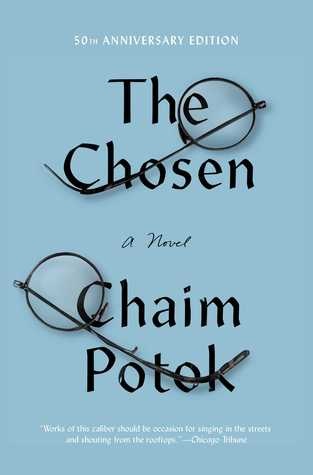 Has it been a half-century since the iconic Chaim Potok's The Chosen was written? Yes, and Simon & Schuster has just published the 50th Anniversary Edition ($27). This classic coming-of-age story is enhanced with photos and essays, perfect for the first-time reader or the re-discoverer.
Has it been a half-century since the iconic Chaim Potok's The Chosen was written? Yes, and Simon & Schuster has just published the 50th Anniversary Edition ($27). This classic coming-of-age story is enhanced with photos and essays, perfect for the first-time reader or the re-discoverer.
Henri Nouwen, one of the most beloved spiritual teachers of the 20th century, received more than 16,000 letters in his lifetime. In Love, Henri: Letters on the Spiritual Life (Convergent, $24) Nouwen archivist Gabrielle Earnshaw has collected 200 of his responses to friends and strangers, offering wisdom and kindness and inspiration.  Mysterious coincidence/ concurrence often happens in publishing (as in life). An example is the publication of two Henry James books: Travels with Henry James (Nation Books, $19.99) and The Daily Henry James (University of Chicago Press, $16). Travels is a handsome edition of his dispatches from Saratoga to Ravenna--deckle-edged, compact--with period photographs and etchings. Daily was originally printed in 1911, as the "ultimate token of fandom." It was edited by Evelyn Smalley, compiled as a commonplace book--a personal collection of quotes. From The Portrait of a Lady: "I judge more than I used to--but it seems to me that I have earned the right. One can't judge till one is forty; before that we are too eager, too hard, too cruel, and in addition too ignorant." --Marilyn Dahl, editor, Shelf Awareness for Readers
Mysterious coincidence/ concurrence often happens in publishing (as in life). An example is the publication of two Henry James books: Travels with Henry James (Nation Books, $19.99) and The Daily Henry James (University of Chicago Press, $16). Travels is a handsome edition of his dispatches from Saratoga to Ravenna--deckle-edged, compact--with period photographs and etchings. Daily was originally printed in 1911, as the "ultimate token of fandom." It was edited by Evelyn Smalley, compiled as a commonplace book--a personal collection of quotes. From The Portrait of a Lady: "I judge more than I used to--but it seems to me that I have earned the right. One can't judge till one is forty; before that we are too eager, too hard, too cruel, and in addition too ignorant." --Marilyn Dahl, editor, Shelf Awareness for Readers
Please Do Not Disturb
by Robert Glancy
Robert Glancy's second novel, Please Do Not Disturb, is set in the fictional East African country of Bwalo. It is a portrait of a land struggling, decades after its emancipation from British colonial rule, to escape the iron fist of the man responsible for its liberation; his despotic reign has turned Bwalo into "a country where anything can happen to anyone at any time."
The novel revolves around an event known as the Big Day, the annual commemoration of Bwalo's independence in the 1980s. Its liberator, King Tafumo, now lies ailing and demented in his palace's medical wing. His bureaucrats, army and secret police serve him by maintaining a terrifying surveillance state, where those suspected of disloyalty simply disappear. Chief among his functionaries is Josef Songa, a childhood friend who now refers to himself, with no small amount of bitterness, as the "Minister of Whispers and Lies."
Glancy (Terms & Conditions), who was born in Zambia and lived in Africa until age 14, creates a convincing portrait of poverty-stricken Bwalo, "a country you couldn't even call forgotten for the fact no one had heard of it in the first place." With events like a near-disastrous safari--for the benefit of a teenage American performer named Truth, who's been flown in with his entourage to provide the Big Day's musical entertainment--and a rapidly unfolding plot to overthrow Tafumo, there's ample action to keep the novel's plot bubbling. Please Do Not Disturb is a tragicomic story of the price exacted when those bent on corruption thwart the promise of freedom. --Harvey Freedenberg, attorney and freelance reviewer
Discover: Robert Glancy's second novel is the story of political intrigue and moral decay in a corrupt African nation.
Mystery & Thriller
Sinner Man
by Lawrence Block
Hard Case Crime specializes in tracking down lost or forgotten works from the golden age of pulp fiction. Decades before he collected nearly two dozen Shamus and Edgar Awards, Lawrence Block wrote erotica (under pseudonyms) for pulpy magazines and publishing imprints. Sinner Man was written in 1959 and was Block's first crime novel. Because he was writing for so many publishers under so many different names, he never knew what happened to this novel. A fan finally found it for him: it had been published in 1968 as Savage Lover by Sheldon Lord. With some edits and minor rewriting, Sinner Man resurfaces as a nearly 50-year-old buried treasure for Block fans, showcasing a writer finding his genre.
Sinner Man starts with a bang: the narrator stands over his wife's dead body. His slap sent her reeling and her head hits the stone fireplace. "The killing wasn't manslaughter and it wasn't second-degree murder--it had ceased to be either the minute I stuffed Ellen's corpse in her closet and decided to leave her to heaven," writes the remorseless narrator, who may remind readers of Patricia Highsmith's Tom Ripley. Instead of panicking, he calmly obtains a fake I.D. to change his name, subtly alters his appearance, moves to a new state and starts working for a gangster.
Block's terse, hardboiled and sardonic prose complements his fast-paced story. He cleverly makes readers root for his unsympathetic narrator. Sinner Man is grade-A, retro pulp fiction that will not disappoint fans of Block, Dorothy B. Hughes or Mickey Spillane. --Kevin Howell, independent reviewer and marketing consultant
Discover: Lawrence Block's first crime novel resurfaces after nearly 50 years, and it's a lean, hardboiled, sardonic and pulpy delight.
Science Fiction & Fantasy
The Fate of the Tearling
by Erika Johansen
Erika Johansen (The Queen of the Tearling, The Invasion of the Tearling) ends her chronicle of the mystical land of the Tearling and its enemies in a time-traveling adventure with the fate of a world in the balance.
Following the events of the second installment, young Tearling Queen Kelsea Glynn and the magical sapphires that defended her kingdom have landed in the clutches of the Red Queen of Mortmesne, the Tearling's sadistic enemy. Kelsea's loyal guard Lazarus serves as regent, his attentions split between the kingdom and rescuing his queen. Her spiritual counselor, Father Tyler, still possesses the long-lost Tear crown, but the church has placed a bounty on his head.
Tortured and chained, Kelsea relies on her indomitable spirit to face the Red Queen, but her enemy seems to desire connection more than retribution, particularly now that the Orphan, an evil spirit from the past, is turning the children of Mortmesne into a cannibalistic force in search of the crown. Kelsea continues to travel in visions back to the founding of the Tearling and the roots of her world's conflict, this time inhabiting a girl her age named Katie, one of a younger generation unconvinced of the merits of William Tear's utopian vision.
Johansen creates her most sweeping vision of Kelsea and her world yet, packing her story with political machinations and explosive revelations, including the long-withheld identity of Kelsea's father. The stunning ending makes a bold statement about sacrifice and rebirth. Readers new to the series should nab the first two volumes prior to learning The Fate of the Tearling. --Jaclyn Fulwood, blogger at Infinite Reads
Discover: This is the astonishing ending to the chronicle of the Tearling and its young, dynamic queen, Kelsea Glynn.
Food & Wine
Grape, Olive, Pig: Deep Travels through Spain's Food Culture
by Matt Goulding
Matt Goulding knows a thing or two about Spanish cuisine: he has loved the country and its wildly varied culinary offerings since his first visit to Barcelona as a wide-eyed high school student. After a brief career as a chef and a slightly longer one as a journalist, Goulding is now happily ensconced in Barcelona, savoring its jamón and churros with his Catalan wife, Laura. In the follow-up to Rice, Noodle, Fish, his exploration of Japanese food culture, Goulding takes readers on a mouthwatering, deeply personal tour through Spain's regional cuisines. Grape, Olive, Pig follows Goulding's peregrinations, diving into the essential dishes of a country with strong opinions about food.
Goulding divides his account into nine chapters, each covering a city (Barcelona, Valencia, Cádiz) or a region (Galicia, Asturias, the Basque country) with its own memorable culinary culture. He highlights chefs, restaurants and dishes from every part of the Spanish plate, from the ultramodern molecular gastronomy of Ferran Adrià to the homely but satisfying tapas bars of Madrid. Color photos depict the dishes (saffron-infused paella, mouthwatering cheeses and charcuterie) and people (the farmers, fishermen and chefs who raise, catch and transform the raw ingredients) that so fascinate Goulding. He also touches on village markets, climate change, gender roles in food production and many more facets of Spain's food culture.
Thoughtful, informed and totally unpretentious, Grape, Olive, Pig is a delicious field guide to the tables and markets of a fascinating land. --Katie Noah Gibson, blogger at Cakes, Tea and Dreams
Discover: Food writer Matt Goulding takes readers on a mouthwatering, informative, deeply personal culinary tour of Spain.
Biography & Memoir
The Clothing of Books
by Jhumpa Lahiri, transl. by Alberto Vourvoulias-Bush
Readers know not to judge a book by its cover. In The Clothing of Books, Jhumpa Lahiri (In Other Words) uses her experiences to reflect on the publishing industry's approach to--and emphasis on--cover art.
"I think that publishers today have overloaded covers with unreasonable expectations.... Book jackets are often blamed if a book doesn't sell. I often hear editors say, 'The book is beautiful. Too bad the cover was wrong.' To be badly dressed is always a condemnation."
Lahiri's parents often dressed her in unfashionable clothing; in this long-form essay, the Pulitzer Prize winner compares her childhood attire with her book covers, lamenting authors' lack of control over the design process and her displeasure at the results. ("I am forced, at times, to accept book jackets that I dislike, that I find problematic, disappointing.") Stereotypes are prevalent, with Lahiri's jackets featuring Indian symbols without considering that "the greater part of [her] stories are set in the United States and therefore pretty far from the river Ganges." Readers might be better served, she says, if covers were akin to school uniforms, allowing for equitable representation.
Originally written as a keynote speech for the Festival degli Scrittori in Florence, Italy, The Clothing of Books is more than personal criticism. Lahiri's viewpoint is bolstered with a brief history of the jacket's evolution and a look at how translations often beget dramatically different images. It will appeal most to savvy readers interested in the inner workings of publishing and its trends. --Melissa Firman, writer, editor and blogger at melissafirman.com
Discover: In this long-form essay, Jhumpa Lahiri explores the nuances of book covers.
War Diaries, 1939-1945
by Astrid Lindgren, transl. by Sarah Death
Astrid Lindgren's War Diaries, 1939-1945, is a fascinating account of life in neutral Sweden during World War II.
Famous today as the creator of Pippi Longstocking, which was published in 1945, Lindgren was a 30-something housewife and aspiring author during the war years. Her diaries are a mix of the personal and political. Marital problems, concerns about her son's difficulties at school and rumors about increased rationing are mingled with her determination to document the course of the war. Lindgren includes clippings from newspapers and information gained on her night job with a security agency responsible for censoring correspondence sent to or from other countries. Although her work was so hush-hush that her children did not know what she did, she had no hesitation about copying and commenting on sections of the letters in her diaries, including letters describing the transportation of Jews to concentration camps in Poland as early as 1941.
Readers hoping to gain insight into the creative process behind what Lindgren describes as "that jolly funny book" will be disappointed. There are few references to her writing. Instead, she describes her relief and guilt over Sweden's relative prosperity, her shame over allowing German troops to travel through Sweden and her fear that the Soviet Union might prove to be a greater threat than Germany.
Lindgren's War Diaries tell the story of the war as seen through the veil of Swedish neutrality--a veil that Lindgren recognized was perilously thin. --Pamela Toler, blogging at History in the Margins
Discover: The creator of Pippi Longstocking documents the events of World War II from Sweden.
Toussaint Louverture: A Revolutionary Life
by Philippe Girard
Toussaint Louverture is better known as a legend more than as a man. For many of his admirers, he was "the George Washington of his race, the black Napoléon, the new Spartacus, or even the Messiah"--the hero who fought his way from slave to international statesman as the leader of the successful Haitian revolution against the French. But he was a cautious man who kept his distance, and his contemporaries left few accounts of him.
In Toussaint Louverture, historian and author Philippe Girard (Haiti: The Tumultuous History) embraces all aspects of this ambitious, radical and contradictory leader who lived in the African, Caribbean and French worlds. "He was a slave rebel and a conservative planter, a caring father and a cold-blooded general, a passionate idealist and a scheming politician." Girard is an entertaining writer and a diligent scholar who has immersed himself in many archives to reconstruct a biography from sometimes fragmented and discordant evidence. Louverture was the Haitian-born grandchild of Benin aristocracy, and first gained his provisional freedom when he was well into his 20s. He tried various business ventures, bought and rented slaves, and even returned to work on his original plantation before age 47, when he became the elusive mastermind of the carefully planned slave revolt of 1791. He was a general, governor and diplomat before he was captured by Napoleon's forces and died at age 59 in a cold French prison cell. This is a detailed and sympathetic account of a powerful historical figure. --Sara Catterall
Discover: Historian Philippe Girard details the life of the ambitious, contradictory and brilliant Haitian revolutionary leader and statesman Toussaint Louverture.
History
Rasputin: Faith, Power, and the Twilight of the Romanovs
by Douglas Smith
Douglas Smith, the author of Former People: The Final Days of the Russian Aristocracy, has written what may be the definitive account of Grigory Rasputin's life and times. He questions every element of the mythos, even countering accusations of Rasputin's criminal background as a horse thief through "a series of documents that have languished unnoticed... until now." That becomes something of a refrain in the biography, as Smith not only reinterprets the work of his predecessors but provides a wealth of new information.
Beginning with Rasputin's obscure transition from a Siberian peasant to a pilgrim wandering among Russian Orthodox holy sites, Smith explains how Rasputin developed his religious outlook: "[he] took in all that the Russian religious world had to offer but kept only that which suited him, fashioning in the process his own version of peasant Orthodoxy." Far from uncovering banal reality behind Rasputin's supposed mystical talents, Smith instead explains how the man's forceful personality came to have such an impact on intelligent, learned people such as the Tsar and Tsarina.
The Rasputin that emerges in Smith's portrait is strikingly different from the one that dominates the popular imagination. The spiritual leader's ascendancy frightened some important Russians who began an enormously influential campaign against him. That campaign was so successful that Smith's book reads like a revelatory work of revisionist history, unearthing a flesh-and-blood person from a century's worth of lies and exaggerations. --Hank Stephenson, bookseller, Flyleaf Books
Discover: Rasputin: Faith, Power, and the Twilight of the Romanovs may prove to be the definitive portrait of his life and times.
Social Science
The Doulas: Radical Care for Pregnant People
by Mary Mahoney and Lauren Mitchell
The term "doula"--used to describe someone occupying a position somewhere between midwife, friend and birth coach--is becoming better known as people recognize the benefits of having unconditional support during labor. But what about those who can't afford to pay for a doula's services? What about pregnancies that don't culminate in a natural birth, but in abortion, miscarriage or stillbirth? What about births resulting in adoption? The Doulas: Radical Care for Pregnant People documents the work of the Doula Project, founded by authors Mary Mahoney and Lauren Mitchell, which connects underserved clients with what they term "full-spectrum doulas." Mahoney and Mitchell envision a "holistic service and advocacy model that challenges stigmatized, artificial divisions among pregnancy outcomes," aiming to provide support and advocacy for all pregnant people, particularly those with fewer resources and women of color.
The Doulas presents with candor the many experiences and emotions navigated by volunteer doulas and their clients. Individual narratives appear alongside chapters geared toward aspiring full-spectrum doulas, who will find valuable guidance about working with clients, moving from activism to direct care, avoiding burnout and building a new doula organization.
The work of a full-spectrum doula comes with its fair share of political tension, and the stories collected here are moving, personal and informative. Activists and healthcare professionals will gain particular perspective. The Doulas addresses the healing nature of face-to-face connection and the benefits of having additional support to help deal with the emotionally and physically challenging experience of pregnancy. --Richael Best, bookseller, Elliott Bay Book Company, Seattle, Wash.
Discover: This book shows how doulas--a combination midwife, friend and birth coach--can help all pregnant women.
Travel Literature
The Lonely Planet Travel Anthology: True Stories from the World's Best Writers
by Don George, editor
Editor extraordinaire Don George (An Innocent Abroad: Life Changing Trips from 35 Great Writers) has compiled his 10th literary anthology for Lonely Planet with The Lonely Planet Travel Anthology: True Stories from the World's Best Writers. The authors include well-known people such as Rebecca Dinerstein, Pico Iyer, Ann Patchett and T.C. Boyle, as well as talented newcomers.
The writing is sometimes sumptuous, sometimes sparse, exploring internal growth in striking exteriors. The scent of jasmine in Damascus tantalizes Suzanne Joinson, and soft cheese and herbs sate Anthony Sattin as he traces the path of Lawrence of Arabia, also in Syria. Two writers marvel at winter views of the Aurora Borealis, and two more expound upon love and loss in Kathmandu. In Wisconsin, Jan Morris sketches a pastoral scene along the Mississippi River, glimpsing a passing train while awaiting fresh eggs for breakfast. Natalie Baszile contributes a poignant account of racial relations in a southern Louisiana town, probing privilege and belonging and the power of simply making introductions.
The countries explored freckle the globe: Bolivia, China, the Congo, Egypt, Ghana, India and Japan, among others. Stories have both moving and seemingly mundane subjects, from the cremation of loved ones to the simple act of sharing a home-cooked meal. These essays span lessons learned, challenges overcome and horizons broadened; ultimately, this anthology beautifully reflects the illuminating power of travel. --Katie Weed, freelance writer and reviewer
Discover: Editor Don George gathers affecting and awe-inspiring stories from stellar writers' travels around the world.
Children's & Young Adult
Word of Mouse
by James Patterson and Chris Grabenstein, illus. by Joe Sutphin
"My story starts on the day I lost my entire family," begins Isaiah, who is a literate, neon-blue laboratory mouse, the youngest, smallest and most cowardly of 96 brothers and sisters. To the "Long Coats" of the "Horrible Place" he is known simply as "Blue 97."
Just as his family is escaping the lab, Isaiah loses them. For the first time in his life, he is alone--no cedar-shaving bed, no kibble, no sugar water, no anything. He is terrified. But also... curious. Out in the real world, in "Suburbia," Isaiah encounters slimy-skinned rats, devil cats and vermin-hating pie-bakers. He wonders, "Is my life outside of the Horrible Place doomed to become nothing but an endless quest for food and shelter?" Isaiah is not homeless for long. He befriends an enormous mouse family, gets a huge crush on a girl mouse, and even meets a 12-year-old, possibly albino human girl who also feels small, misunderstood and powerless, and who affirms, "We're all different. It's the only thing we have in common." Through many suspenseful scrapes, Isaiah proves time and time again he's not the cowardly mouse he once thought he was. Is there any way he can tap into that new-found courage and reunite with his family?
Chris Grabenstein (Escape from Mr. Lemoncello's Library) has collaborated with James Patterson on the I Funny, Treasure Hunters and House of Robots series. Joe Sutphin's absolutely wonderful, delicately etched black-and-white illustrations--reminiscent of Garth Williams's fine work--catapult this witty, action-packed middle-grade novel to new heights. Sweet, brave Isaiah will surely scurry and dart his way into readers' hearts. --Karin Snelson, children's & YA editor, Shelf Awareness
Discover: In James Patterson and Chris Grabenstein's lively middle-grade novel, a blue mouse explores the big world outside the only home he's ever known--the laboratory.
The Lonely Giant
by Sophie Ambrose
"In a cave, on top of a crag, in the middle of a huge forest, lived a giant. The giant spent all day, day after day, doing what giants do... pulling up trees as though they were weeds, heaving and hurling huge logs like spears, and smashing and mashing mountains." This way of life is all well and good until the giant realizes his hard work has resulted in the disappearance of the forest and all the wildlife and its sounds. But when a small yellow bird shows up, singing and following him around all day, the heartened giant finds hope for his loneliness. He puts her in a cage. Unfortunately, he has yet to learn that nature shouldn't be destroyed or contained for one's own pleasure.
British author-illustrator Sophie Ambrose's lovely debut provides gentle lessons on friendship, freedom and a human's relationship with the natural world. Her tremendously appealing acrylic, watercolor and colored pencil illustrations capture the ingenuous violence of a giant who knows no other way to live. The aggressive bashing of mountains is offset by the delicate precision with which he pulls up trees by the roots. His big square-jawed face is kind, even as he goes about his workaday business of destroying things. Readers will be especially moved by the illustration of the giant sipping a teeny-tiny cup of tea in his cave--at his feet the in-progress carvings of the very animals he has displaced. And when he oh-so-gently holds the yellow bird on the tip of his rough finger and apologizes for caging her, it's clear change is in the air. --Emilie Coulter, freelance writer and editor
Discover: A giant smashes and mashes mountains and forests--because that's what giants do--not realizing until it's almost too late that there are repercussions to his destruction.




